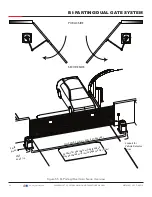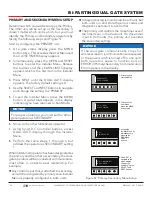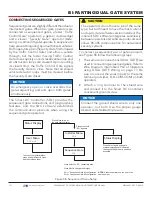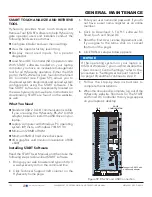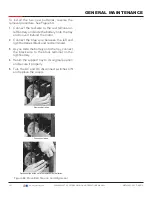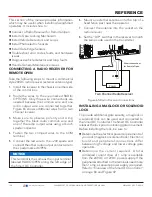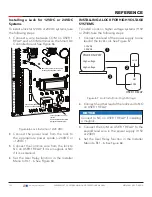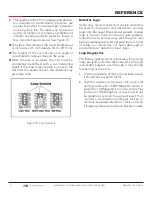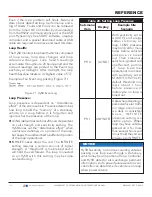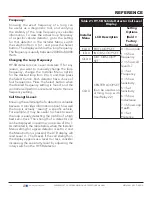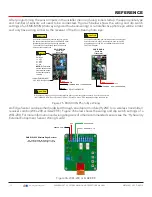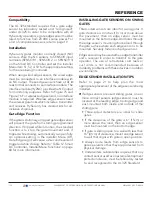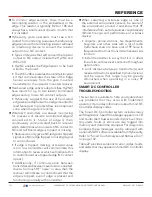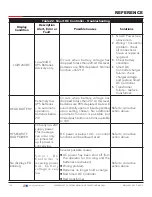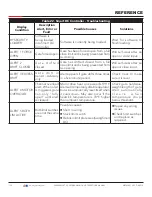
Rules to Follow for Security Gate Applications:
Side of the loop closest to the gate must be
located at least 4 ft from the line of travel.
1.
Shortest side of loop should be between 6 and
8 feet (1.8m and 2.4m) in length. Longest side
of loop should be between 6 and 20 feet (1.8m
and 6.1m) in length. For applications that need
to span a wide area, use several smaller loops.
Do not connect more than 200 square feet
(18.6sq. m) of loop area to a single detector.
2.
In applications with multiple loops, keep each
loop at least 6 ft (1.8m) apart. This avoids
“cross talk”. It is possible to have loops closer
together by selecting different frequencies. An
advantage of using HySecurity model HY-5B
detectors is that problematic “cross talk” is
not possible.
3.
For greater sensitivity and less chance of false
calls caused by gate motion, it is better to use
multiple smaller loops, connected in a series
circuit, to one detector instead of a single
large loop.
4.
To avoid interference, keep loops at least
2-inches (5cm) above any reinforcing steel. Do
not route loop wires with, or in close proximity
to, any other conductors, including other
loop leads, unless shielded lead-in cable is
used. Never route high voltage circuits in PVC
conduit near a loop.
5.
Loop and lead-in wire should be one continuous
piece. Avoid splices, if possible. If a splice is
necessary for any reason, “pot” the splice
inepoxy or use heat shrink to ensure that the
quality of the splice covering is the same as
the original wire jacket.
6.
Use only 14, 16, or 18 gauge stranded wire with
a direct burial jacket. Cross linked polyethylene
insulation types, such as, XLPE or XHHW, will
last much longer and are less prone to damage
during installation than conventional insulation
types. Preformed loops can be used before
road surfacing or under pavers.
7.
Twist loose tails of lead-in wires tightly,
approximately ten times per foot. See Figure
8.
Follow this guide for the correct number of
turns in the loop; 12 to 20 sq. ft = 5 turns; 20
to 60 sq. ft. = 4 turns; 60 to 240 sq. ft. = 3 turns;
3.7 to 6.1sq. m = 5 turns; 6.1 to 18.3 sq. m = 4
turns; 18.3 to 73.1sq. m = 3 turns
Figure 69. Wire Twist Lead-ins
Table 18. Loop Wire Turns according to the
Perimeter Size of the Loop
Perimeter
Size in Feet
Turns
Perimeter
Size in
Meters
10 to 13
5
3 to 4
14 to 26
4
4 to 8
27 to 45
3
8 to 14
46 to 100
2
14 to 30
Twist lead-in at least 10 turns per foot
Like This
Not Like This
Twist Like This
REFERENCE
111
| www.hysecurity.com
SWINGSMART DC PROGRAMMING AND OPERATIONS MANUAL
MX3640-01 REV. D ©2018


